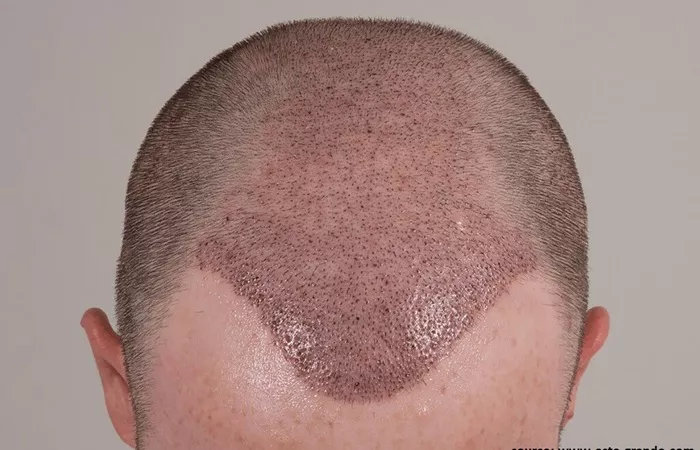A hair transplant is a common procedure for restoring hair loss, but the recovery process involves several stages, including the formation and eventual shedding of scabs. This article will explore the typical duration for scabs to fall off after a hair transplant, provide insights into factors that influence scab formation and shedding, and offer tips for managing the healing process effectively.
Understanding the Healing Process of Hair Transplants
The Hair Transplant Procedure: An Overview
Hair transplantation involves moving hair follicles from a donor site, typically the back or sides of the head, to areas experiencing thinning or balding. The procedure is generally performed in two primary methods: Follicular Unit Transplantation (FUT) and Follicular Unit Extraction (FUE).
FUT: Involves removing a strip of scalp from the donor area and then dissecting it into individual follicular units for transplantation.
FUE: Involves extracting individual hair follicles directly from the donor area and transplanting them to the recipient site.
Both methods result in tiny incisions in the scalp, which will eventually form scabs as part of the healing process.
The Formation of Scabs: What to Expect
Scabs are a natural part of the healing process following a hair transplant. They form as a protective barrier over the tiny incisions created during the procedure. This process helps to protect the newly transplanted follicles while they begin to establish themselves in their new location.
Timeline for Scab Formation
Initial Phase (Days 1-3):
Immediately after the procedure, the scalp may appear red and swollen. Tiny scabs start to form around each transplanted follicle within the first 24-48 hours.
Early Healing Phase (Days 4-7):
The scabs become more noticeable and may appear as small, crusty spots on the scalp. During this period, it is essential to follow post-operative care instructions to avoid dislodging the scabs.
Ongoing Healing (Weeks 2-3):
The scabs gradually start to loosen and become less crusty. The scalp begins to heal, and the scabs may become flaky.
How Long Until Scabs Fall Off?
The time it takes for scabs to fall off varies from person to person, depending on several factors:
Individual Healing Rates:
Everyone heals at a different rate. Typically, scabs will begin to fall off within 10-14 days after the procedure. By the end of the third week, most scabs should have naturally shed.
Post-Operative Care:
Adhering to the post-operative care instructions provided by your surgeon is crucial. This often includes gentle washing of the scalp, avoiding scratching or picking at the scabs, and using prescribed medications or topical treatments.
Type of Procedure:
The method used for the hair transplant can also influence scab formation. For example, FUE might result in slightly different scab patterns compared to FUT.
Factors Affecting Scab Formation and Shedding
Several factors can impact how quickly scabs fall off after a hair transplant:
Scalp Sensitivity:
Individuals with more sensitive scalps might experience longer scab formation and healing times. Using gentle, non-irritating products can help manage sensitivity.
Hair Density:
The density of the transplanted hair can influence scab formation. Higher density might mean more scabs, which could take slightly longer to fall off.
Infection or Complications:
In rare cases, infections or complications can affect scab formation and healing. If you notice signs of infection, such as increased redness, swelling, or pus, contact your surgeon immediately.
Environmental Factors:
Exposure to sunlight, dust, or harsh chemicals can impact the healing process. Protecting your scalp from these elements is essential for optimal healing.
SEE ALSO: Can You Use Hair Fibers After Hair Transplant?
Tips for Managing Scabs During the Healing Process
Follow Post-Operative Instructions:
Adhere strictly to the care instructions provided by your surgeon. This typically includes avoiding vigorous washing, scratching, or rubbing the scalp.
Use Gentle Products:
Use mild, non-irritating shampoos and conditioners recommended by your surgeon. Avoid products with strong fragrances or chemicals.
Avoid Sun Exposure:
Protect your scalp from direct sunlight, which can cause irritation and affect the healing process. Wear a hat or use sunscreen if advised by your surgeon.
Maintain Cleanliness:
Keep your scalp clean to reduce the risk of infection. Follow your surgeon’s recommendations for washing and caring for your scalp.
Stay Hydrated and Healthy:
Proper hydration and nutrition support the body’s natural healing processes. Eat a balanced diet rich in vitamins and minerals to promote healthy skin and hair growth.
Avoid Strenuous Activities:
Refrain from engaging in activities that may cause sweating or physical stress on the scalp. Allow your body to rest and recover fully.
When to Seek Medical Advice
While scabbing is a normal part of the healing process, there are certain signs that may indicate a problem:
Persistent Redness or Swelling:
If you experience prolonged redness or swelling beyond the initial healing period, consult your surgeon.
Unusual Discharge:
Any unusual discharge, such as pus or a foul odor, may be a sign of infection and should be addressed promptly.
Severe Itching or Pain:
Mild itching is common, but severe itching or pain may require medical attention.
No Improvement:
If the scabs do not begin to fall off within the expected timeframe, or if you notice no improvement in your scalp condition, seek professional advice.
Conclusion
Understanding the typical timeline for scab formation and shedding after a hair transplant can help set realistic expectations and ease concerns during the recovery process. By following post-operative care instructions and managing the healing process effectively, you can promote optimal results and support the successful integration of your newly transplanted hair.
Remember, each individual’s experience is unique, and patience is key. If you have any concerns or notice unusual symptoms, always consult your surgeon for personalized guidance and support.

